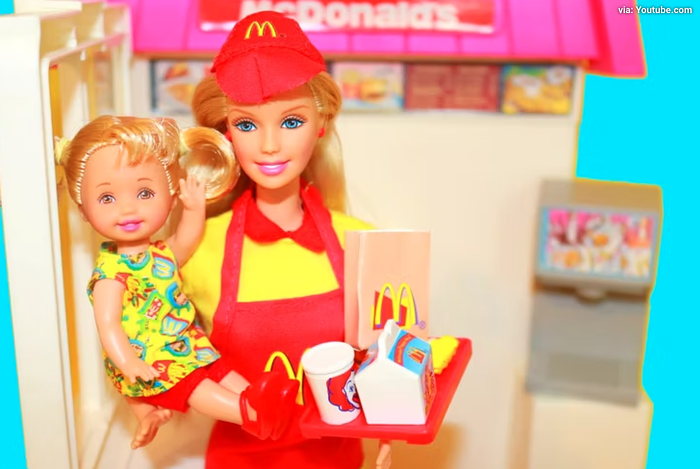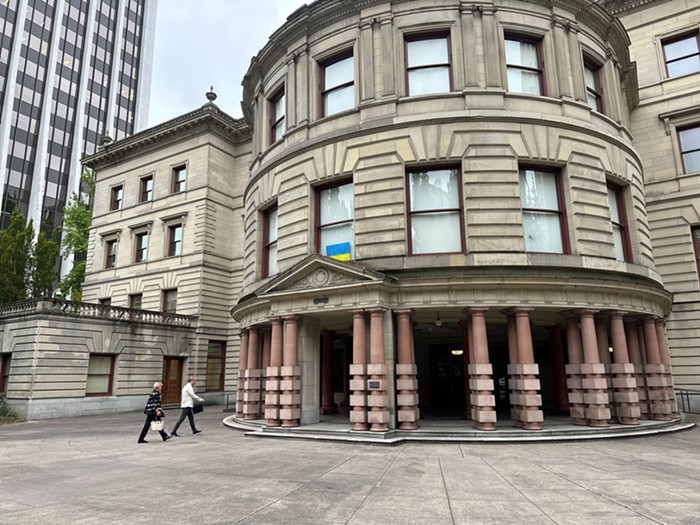
Five minutes into Elizabeth LeCompte's roundtable discussion of There Is Still Time..Brother, the legs were knocked out of my primary criticism of the show. The Wooster Group has been billing There Is Still Time as an "anti-war film," which implies a considerably more pointed tack than the 360-degree, interactive film actually takes (read a description of the show here, if you're not familiar). When describing it at this afternoon's talk, LeCompte was much more vague—they weren't sure if they should call it a war film, or an anti-war film, or a "war game," she said. "It's something about how we watch war," and about the choices we make about where to spend our attention.
LeCompte is kind of a Patti Smith-esque figure, a punk rock doyenne with a genial, distracted air that's replaced by intense focus when her interest is piqued. Along with the Wooster Group's Geoff Abbas and Kathleen Forde of the Experimental Media and Performing Arts Center (EMPAC), LeCompte discussed the work, from its inception as a project commissioned by EMPAC—challenging Wooster to create content for the technology—to its structure, themes, and reception.
LeCompte identified the show's three distinct narrative threads: One is based on an explanation of the technology being utilized; one is from a script written by a 14-year-old in one of Wooster's summer programs, about the French-Indian war in Ohio; one is based on Rosie O'Donnell's blog. Other content comes from "anything people were looking at" during the period when the show was being created (2006-7, I think they said). Footage from the Iraq war; Paris Hilton's sex tape. It's the audience's decision, though, what to ultimately focus on, and how they choose to construct a narrative from the information that's unfolding in a 360-degree wash all around them. (The bell, in case anyone's wondering, indicates the end of a scene.) The show's viewing window is controlled by the audience member sitting in a certain chair in the middle of the room—everyone is forced to watch what the person in the chair wants to watch, creating a situation in which, LeCompte noted, "Your choices would be judged."
LeCompte and Abbas also discussed the show's built-in possibility that one person might seize and keep control of the viewing apparatus, imposing their own perspective indefinitely without regard for the rest of the room—but LeCompte explained that she finds that possibility interesting—that when held hostage to another person's viewpoint, she's forced to consider why the person is making the decisions they are, instead of simply following her own impulses.
During the Q&A, one guy in the audience confessed to having spent three hours in the room—once you relax into it, stop trying to find a narrative and start following your curiosity around the room, it's a really engaging experience. Another audience member asked what the point of the show was—if it was just about Wooster's creative journey, or if there was anything they wanted the audience to get out of it—and Abbas basically responded with, "We want the audience to have fun." It is fun. It's a high-concept playground, well worth exploring.












